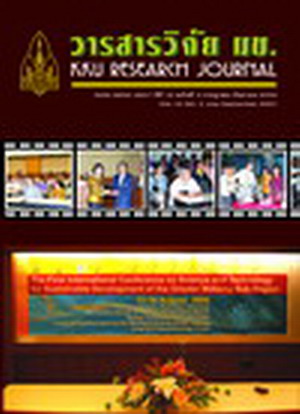A Study of Nitrogen and Phosphorus in Various Wastewaters in Thailand
Main Article Content
Abstract
To avoid harmful effects on human health and environment, nitrogen (N) and phosphorus (P) must be removed from wastewater before discharge into the environment. Nitrate (NO3 - ) is a significant potential public health hazard in drinking water and presents the risk of methemoglobinemia (blue baby syndrome) in infants. Nitrogen and phosphorus are major nutrients that enhance eutrophication of freshwater, lakes, estuaries, and oceans. Domestic sewage, agriculture, and industries are sources of N and P, but domestic sewage is a major source of these nutrients in Thailand. In order to control excessive discharge of both N and P substrates, high efficiency treatment systems and good management practices have been developed and are proposed in this study. Effluents from stabilization ponds (centralized wastewater treatment plants) were randomly sampled and analyzed according to Standard Methods 2000 all year long in 2001 and 2005. The characteristics of effluent (both N and P) from many different wastewater sources were determined and analyzed by using primary data from the Department of Pollution Control and Industry Control. Low efficiencies of nutrient removal by biological treatment in both centralized and decentralized wastewater treatment plants were found. For this reason, excessive quantities of both N and P substrates should not be discharged directly to the environment. The best way to remove both N and P is by a combination of biological and chemical treatment. Materials to effectively adsorb phosphorus while providing growth medium for nitrogen removing bacteria would be discussed. The results from this study could be used as a guideline for nutrient removal from municipal wastewater.

